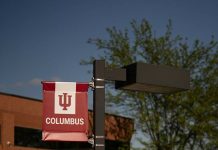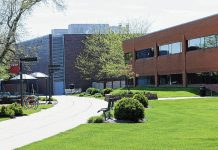HOPE — In the first rate hike in 11 years, Hope residents will see their water bills jump 60 percent in either early November or early December.
Final passage of an ordinance setting the new rates was unanimously approved Monday by the Hope Town Council.
“I see no way to get around this,” said council member Clyde Compton, who made the motion for passage. “As much as I hate doing this, like everyone else on this council, water is an essential part of life.”
For residents who use the normal average of 4,000 gallons a month, the current $28.13 monthly bill will jump to $45 by the end of the year, said project consultant Otto W. “Buzz” Krohn of Westfield.
The minimum water bill will rise from $17.58 to $28.13 late this fall, Krohn said.
It will be the first of two rate increases necessary to fund an upcoming $3 million upgrade that will replace about 25 percent of the town’s water distribution system, Krohn told the council.
In early fall 2016, most rates are expected to climb an additional 8.5 percent, Krohn said. For the 4,000-gallon user, the monthly bill will rise to $48.83, he said.
Almost half of the town’s water mains are 80 years old and deteriorating, which causes a large percentage of the water the town buys from Eastern Bartholomew Water Corp. to leak out of the system, Hope Utility Manager David Clouse said.
Those leaks have caused the water division of Hope utilities to operate at a loss for several months, and some of the rate hike will be used to make up for past losses, said former town council member Tim Shoaf, who was in the audience Monday.
Although it’s possible that lower water bills might result from stopping the current leaks, Krohn said, that won’t be determined until at least late 2017.
Krohn said the project is expected to improve water pressure and increase reliability and service.
While the second rate hike could have gone up 21.5 percent, the town announced Monday it will receive a $925,000 grant through a state revolving fund that will be utilized to keep the final hike at 8.5 percent, Krohn said.
But in order to get the state grant, he said, it’s necessary to enact the initial 60 percent rate increase as soon as possible, which he admitted is a “big, sensational number.”
“To qualify for that program, we needed a $45 average bill for a 4,000-gallon user,” he said.
This is the second grant Hope has received in connection with the upcoming utility project. The town secured a $500,000 federal grant in July from the U.S. Department of Housing and Urban Development.
But when asked during a public hearing whether more grants might be forthcoming to lower water bills, Krohn shook his head.
“There is not going to be any more money,” he said, adding that the actual rate could be changed by construction bids, which will be opened in November.
During a public hearing attended by nearly 20 local residents, concern was expressed about the impact higher water rates will have on the town of 2,100 residents, where the median per capita income is $19,357, compared with $28,765 in Columbus.
Many residents are on fixed incomes, and about 10 percent are 65 or older.
Most don’t subscribe to a newspaper, which means “they won’t know what’s happening until their water rates goes up — and then it’ll be too late,” said Hope resident and audience member Mary Price.
“The main reason to live in Hope is economical,” Price said. “But they just doubled our property taxes for the schools, … and now you are going to jack up our water rates tonight?”
That tax hike Price was referring to actually was approved in a 2008 referendum, in order to fund a $18.87 million school renovation project, Bartholomew County Deputy Auditor Chris West said.
While the property tax rate in Hope has fluctuated as high as 84 cents per $100 of assessed valuation, this year’s rate is actually 68 cents, West said.
When Price asked if the town could provide exemptions to those who can least afford to pay the hike, Krohn described such actions as illegal discriminatory pricing.
Instead, he recommended those who cannot afford to pay the higher rate to contact their township trustee for guidance on where to seek assistance.
After a few residents insinuated that Hope Utilities was attempting to raise profit margins, Krohn responded that public utilities don’t have shareholders demanding dividends.
“Any retained earnings stay for the benefit of the rate payers and citizens,” Krohn said. “And if we were (trying to increase profits), we wouldn’t be eligible for these grant programs.”
In order to prevent more dramatic rate hikes in the future and avoid what he describes as sticker shock, Shoaf recommended that the council examine water and sewage rates every three to four years to make necessary adjustments.




